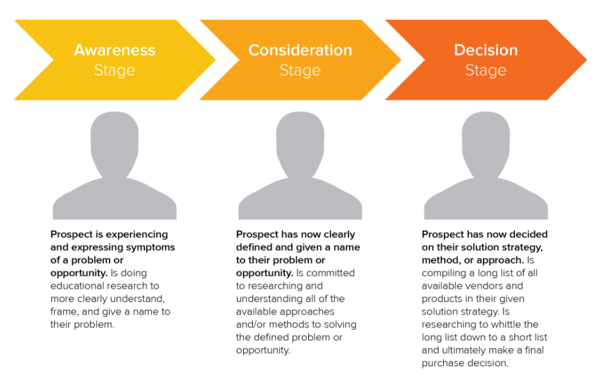We all need to know how the pounds and effort we're throwing into our marketing campaigns are...
Email workflow best practices, also known as drip campaigns and email automation, is something which takes constant management and tweaking. A great aim should be for users to never realise they are being marketed to autonomously.

It needs to be thorough and updated regularly to maximise your inbound marketing return on investment.
- The best practices for email workflow - explained
- What do these practices offer your customer?
- How can you benefit?
- Who should use it?
The best practices for email workflow - explained
1. Define your goals for an email workflow
There are a number of different goals you’ll want to consider implementing for your email workflow. Obviously the main goal is to increase the rate of your conversions, but that’s not the only one you want to focus on.
Developing workflows is more about creating value at every stage of the buyer’s journey, rather than simply increasing their likelihood of making a purchase.
Another goal to implement using email workflow is building trust within your customer base. If your emails are targeted and relevant, reaching a customer at the perfect time within their buyer’s journey, it’s going to provide a lot of value for that customer.
This increases their interest in your brand and the trust they have in you. Delivering this kind of information at the right time not only builds trust, but showcases your expertise on a subject, and also prepares the customer for the next step in the buyer’s journey. It may even open them to other avenues they haven’t considered.
Here are some example goals you can choose from:
- Increase your customer conversion rate.
- Increase the rates of customer engagement.
- Shorten the timescale from initial email to purchase.
- Increase the ROI of email.
- Build trust within customers.
- Increase the likelihood of return customers.
- Increase positive mentions and reviews.
Creating goals allows you to track the effectiveness of each process you put in place.
2. Create and frame the right content for the right customer
At this stage, your content needs to be tailored for each customer at each stage of their buyer’s journey. It’s all about providing value and striking up a rapport, building a good relationship over a slow-burn.
The content should be created with both your customer and goals in mind. It should also show an easy pathway for the customer to take the next step in their buyer’s journey. One of the best things to remember is that this process needs to be frictionless.
Check out this workflow for a little inspiration:
- Your first email should identify a problem and give a few detailed ways to go about solving it.
- A second email explores the specific ways your company solves the problem, with evidence to back up your process.
- A third email includes persuasive copy that will get the lead to buy your company’s solution.
Remember, your content and workflow need to utilise how your customers are interacting with your email. Not everyone will open the first email, so it makes sense to track these interactions and act accordingly. Only a well-developed customer relationship management (CRM) tool can do this. Or a team who uses one.
If you’re working with an inbound marketing agency, they’ll have a team ready to write content that’s tailored to your customers' needs. If you fancy having a go yourself, we’ve even got a great blog on three types of workflow email processes and how to go about implementing them.
3. Analyse your leads
While creating an email workflow, you need to keep in mind which of your customers class as ‘qualified leads’. There’s no point in creating content and emailing people who have no interest in doing business with your company.
Take an in-depth look at your customers’ information and their history of engagement. This will help you create more outreach strategies that you can utilise in the future. Remember this mantra, right content at the right time.
4. Keep your customer database up-to-date
This links directly into analysing your leads and can be done both before and after creating and sending out your first set of emails.
Keeping an up-to-date database allows you to be more confident in how you define what a ‘qualified lead’ is in terms of what your company offers. This means that you can also keep your emails updated so that they’re constantly performing at an optimal rate.
What do these best practices offer your customer?
When done comprehensively, these best practices mean each recipient should:
- Not notice they’re part of an automated email workflow.
- Not feel like they are involved in a sales process.
- Feel special and communicated to personally.
- Be left with the maximum chance of converting.
Many organisations aren’t even using automated workflows. If you’re not, then your business is going to be less efficient at delivering a top-quality and effective sales process.
To create a workflow which performs this well, it takes care, attention and a lot of front-end set up. The workflow needs to have a complex series of "If This Happens Then Do That" type rules and decision branches within it.
For example, if somebody ignores three emails and opens the fourth, they could go down a different branch of the workflow than somebody who opens every email and reads every last word.
Obviously, besides the research and planning for creating the workflow rules, you also need to write an increasing amount of different emails.
This is before mentioning the planning and analysis of all the other factors affecting email success rates.
How can you benefit?
Emails from your workflow will stand out and be more likely to generate clicks, which means your leads are being nurtured through the buyer's journey effectively. They should be some of your best performing emails - perfectly aligned with a person’s interests at the time.
This will be confirmed by an action they’ve taken, such as downloading a guide.
 Image Credit: HubSpot
Image Credit: HubSpot
This process builds trust and engagement which, provided your content back on your site or available for download is up to scratch, should mean leads convert into customers more often.
For even more info, check out our blog on the 10 benefits of email automation.
Who should use it?
It can only be effectively used if you have access to a complete, workable and inclusive CRM tool, or if your dedicated marketing agency uses one. Here at Digital 22, we use HubSpot which can effectively plan and action successful email automation.
It should also only be used by businesses which are ready to harness the conversions it leads to once the lead reaches the end of the buyer's journey. Otherwise customers will head elsewhere and unfortunately, it’ll mean you’ve nurtured a conversion for somebody else.
Standard or generic workflows might keep returning some sort of results but these more thorough and complex best practice workflows can be the niche opportunity to get one over the competition. So how can you see something like email automation in action as part of an effective inbound marketing campaign?
Explore what an effective inbound marketing campaign looks like in action
If you want to see what an inbound marketing campaign looks like and how it helps you get ahead of your competition when it comes to email, PPC, SEO and more, check out our ‘A Year in Inbound’ guide.
Our guide will help you see what an inbound marketing campaign looks like over 12 months, from creation to implementation. It will also explain the amazing results you can expect to see.
Press the button below to download ‘A Year in Inbound’.


